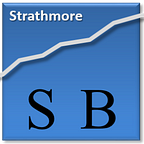Show Me the Money (Part III): Increasing your profits by optimising your costs
In the final part of our 3-part series, we look at how you can increase your profits by simply reducing and optimising your costs.
In any business, increasing profit does not necessarily come from growing revenue. Your business can and should strive to optimize costs. In fact, before embarking on the expansion road, your business must run at its most efficient at its current level of revenue. According to the cost containment expert Max Friar (of Alliance Cost Containment) every company is bleeding profits through a thousand little cuts; most companies are spending 15–30% more on indirect operating costs than necessary.
While it is easy to focus on the big headline costs such as insurance or labour, there are small recurring expenses like M-Pesa transaction fees or parking in CBD every day that also add up into big costs. Others include overstocking or use of expensive credit because you are not watching your cash flow.
Like with anything else in business, there is a strategic approach to cost optimization.
- First of all, identify all your costs. Per product or per project analysis is important to identify your cost and value drivers.
- Now classify them into: fixed, variable, direct and indirect costs.
- Then categorize them into those you can control and those you can’t. For example, you can’t control the price of raw materials, but you can stop wasting electricity and moving into a smaller office is within your power.
- Proceed to reduce controllable costs. First lower fixed and indirect costs like rent, marketing, utilities.
- Cut out expensive habits. Analyze your past costs and detect cash leakages. Introduce cost discipline and stick to it.
Where you should NOT be cutting costs:
Quality
Cost savings should be entirely focused on costs unrelated to product or service quality. Otherwise, you risk losing your customers and affecting your hard-earned reputation. At this stage strategy comes into play because it is crucial to understand your target customers and their needs very well. What is indispensable for them in your offering and what can be safely relinquished?
Instead of switching to lower quality ingredients, you are better off optimizing your stock levels. Keep minimum inventory in minimum space for the minimum amount of time. Minimum doesn’t mean low but just enough to not lose sales. Analyze your sales (average sales, peak times), calculate your needed stock levels and determine your re-order point taking into account maximum lead time, i.e. the time between ordering and receiving the supplies.
Deferred repairs and maintenance
Putting off maintenance of your vehicles and machinery may seem like immediate cost reduction, but in fact is more likely to result in higher costs, breakdown of assets and the consequent need for their replacement may even adversely affect your sales through disruption.
Taxes and obligatory contributions
Not paying your taxes or your obligatory employer contributions may result in a litigation, which can be expensive, if not threatening to the very existence of your business. This is precisely what risk management is all about — classify and mitigate risks by how they will impact your business.
Share profits with your employees
Lastly, make sure your employees are just as interested in enforcing the cost saving measures as you. One way to achieve this is letting them participate in profits of the company, for example, through bonuses. To a profit-sharing employee, a shilling saved for the company means more money in his or her pocket. Paying employees at the bare minimum level is, on the other hand, precisely the compromising on quality we mentioned above, since it demotivates and disincentives your staff.
At ISBI we strive to give entrepreneurs practical advice that enables them to grow their businesses. Sign up to our newsletter for similar articles and tips.
